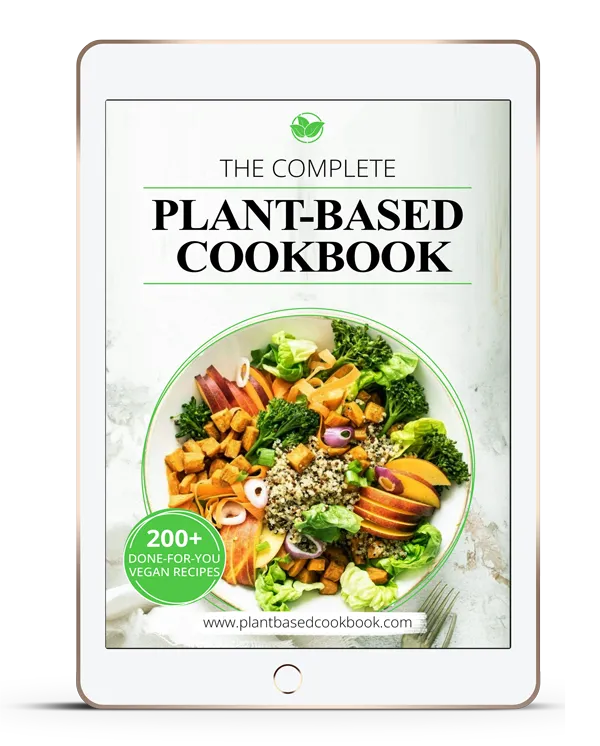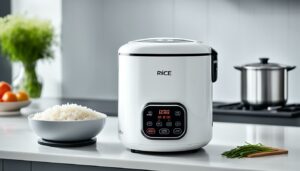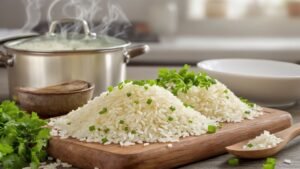We’ve all been there—lifting that rice cooker lid to discover a mushy, overcooked mess that resembles porridge more than perfectly fluffy grains. The culprit isn’t your cooker; it’s technique. Most home cooks make the same seven critical mistakes that transform what should be simple, foolproof rice into an inedible disaster. Master these essential fixes, and you’ll never waste another batch again.
Table of Contents
ToggleRinse Rice Thoroughly Before Cooking
Before you even think about heat, we’re washing that rice until it surrenders every grain of excess starch. Grab a fine mesh sieve.
Rinse rice under cold water—aggressively. That cloudy water? Pure starch waiting to sabotage your rice cooker dreams into mushy rice nightmares.
Keep rinsing until water runs crystal clear. Three rounds minimum. No shortcuts. This isn’t optional—it’s mandatory for preventing the gummy disaster that haunts mediocre kitchens.
Thoroughly washing rice transforms your cooked rice from sticky disappointment into fluffy perfection. Skip this step, and you’ll cook rice that resembles wallpaper paste.
Prevent stickiness. Achieve fluffier texture. Win.
Use the Correct Water-to-Rice Ratio
Getting your water-to-rice ratio wrong transforms perfectly good grains into mushy disasters faster than you can say “takeout.”
We’re talking precision here—not eyeballing, not guessing, not using whatever cup happens to be nearby. Short grain demands exactly 1:1 water-to-rice ratio.
Long grain white needs 1¼ cups water per cup rice. Period. Use actual measuring cups for accurate measurements—your rice cooker isn’t magic.
Excess water creates soggy rice nightmares. Check your lid fits tight. Loose lids let steam escape, throwing off ratios.
Different brands cook differently, so adjust accordingly. Master these fundamentals to prevent overcooking and achieve perfect grains every time.
Select the Right Rice Cooker Setting
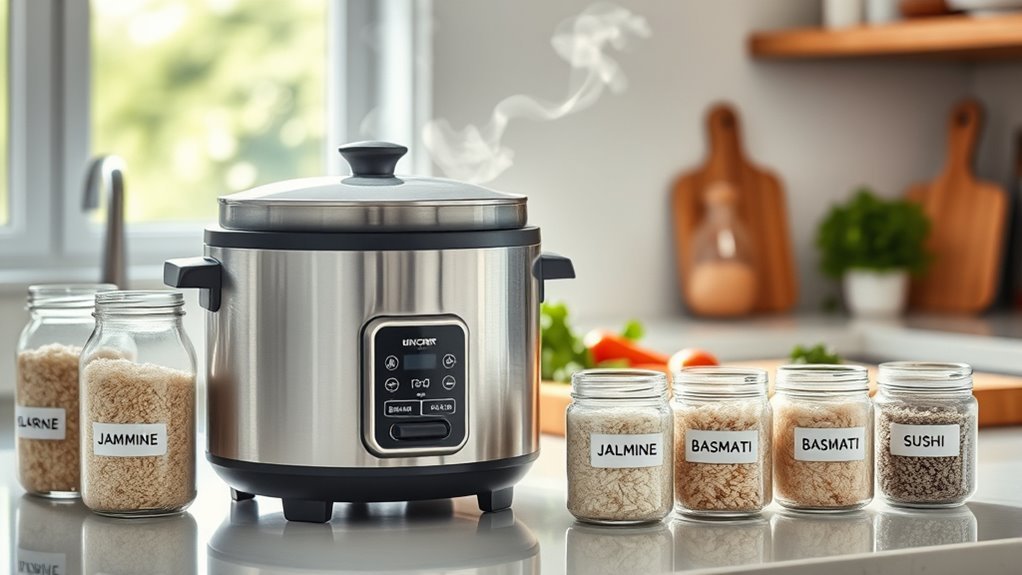
While your rice-to-water ratio sets the foundation, selecting the wrong cooker setting demolishes perfectly measured ingredients faster than a kitchen fire.
We’ll select the right rice cooker setting to cook this recipe perfectly. Use Glutinous Rice mode for white rice—it’s counterintuitive but effective. Experiment with Mixed Rice or Nutritious Rice programs to find your preferred texture.
Avoid heating power settings below -3; you’ll get crunchy disasters. Pressure cooking increases stickiness, so choose modes minimizing pressure to avoid overly moist rice.
Check your manual’s cooking program specifications. Proper settings deliver ideal doneness every time. Rice cookers reward precision.
Avoid Opening the Lid During Cooking
Even if curiosity burns hotter than your stovetop, resist the urge to peek under that lid during cooking. Every peek sabotages your rice cooker’s steam cycle. That trapped steam creates consistent cooking conditions, allowing rice to evenly absorb water without drama.
| Lid Action | Result |
|---|---|
| Keep closed | Perfect, fluffy rice |
| Peek once | Uneven texture |
| Multiple peeks | Mushy disaster |
| Ignore cooking time | Overcooked mess |
Each lid lift drops cooking temperature instantly, extending cooking time unpredictably. Your rice cooker knows its job—trust the process. Different rice types demand specific timing. Interrupting creates chaos, turning perfectly planned grains into disappointing mush.
Let Rice Rest After Cooking Completes
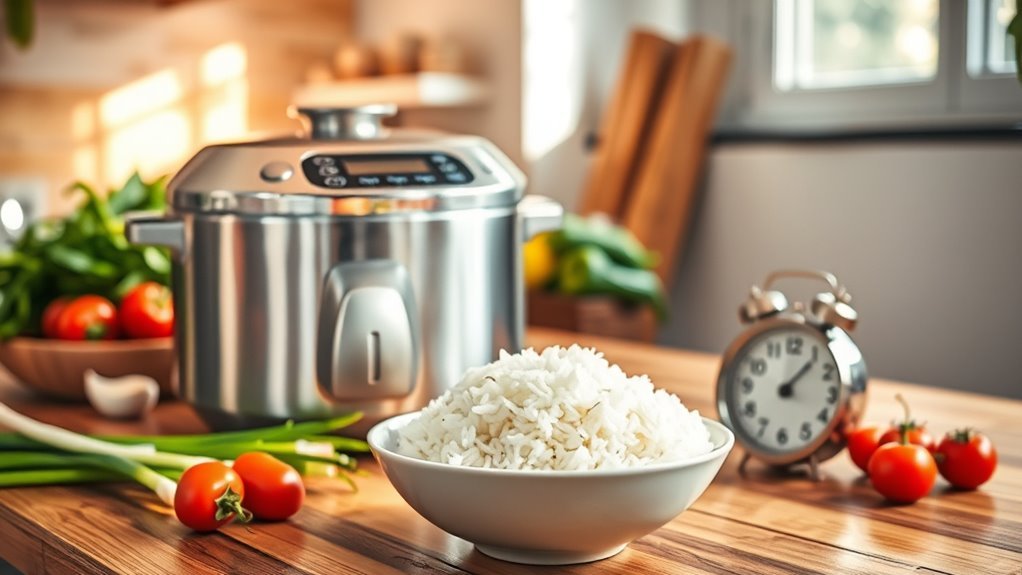
After that cooking timer beeps, don’t touch anything yet.
Let the rice rest—this step is vital for achieving ideal rice texture. Steaming continues working magic while you wait.
Here’s your post-cooking protocol:
- Cover the rice with a clean, dry towel under the lid to absorb excess moisture.
- Wait 15-20 minutes while residual steam finishes the job evenly.
- Resist peeking—patience prevents uneven textures and overcooked rice disasters.
- Fluff and serve once resting completes for perfectly separated grains.
Skip this step? You’ll get mushy, split grains that clump together.
The resting phase redistributes moisture throughout, eliminating firm-top-to-soggy-bottom syndrome entirely.
Choose the Appropriate Rice Type for Your Cooker
Your rice cooker isn’t a magical device that transforms every grain into perfection—it’s a precision instrument that demands the right raw materials.
Choose appropriate rice types that match your cooker’s capabilities. Different varieties demand specific water-to-rice ratios—jasmine needs different treatment than basmati. Long-grain rice requires more water for fluffy outcomes, while short-grain becomes naturally sticky.
We can’t stress this enough: check your cooker’s settings for best cooking ratios. Most models offer specialized modes for various types. Experiment with proven formulas—1:1 for short-grain, 1:1¼ for long-grain. Your manual holds the keys to consistent results.
Clean and Maintain Your Rice Cooker Regularly
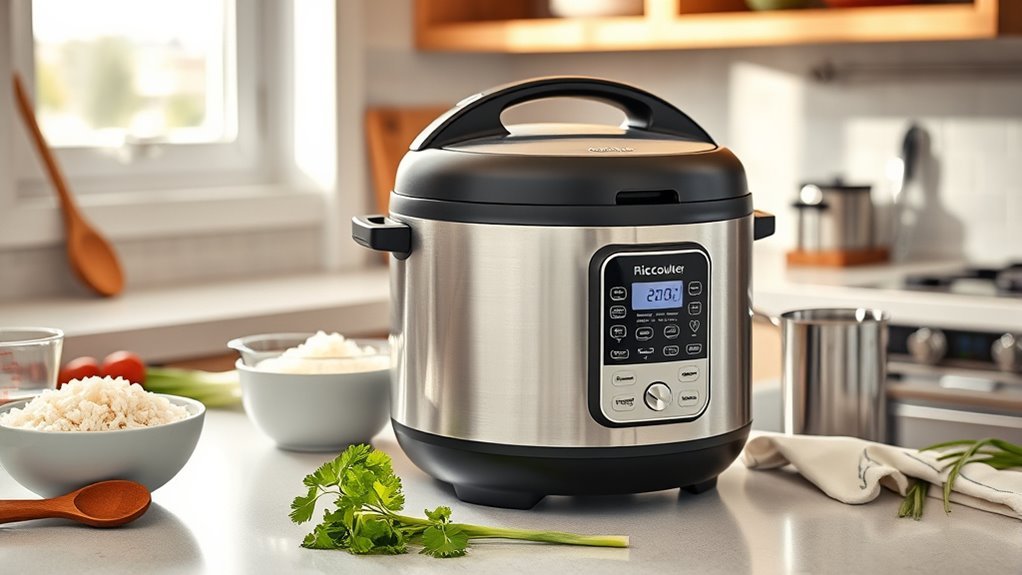
Three things kill rice cookers faster than neglect: starch buildup, clogged vents, and dirty heating elements.
We’re talking about cooking performance that nosedives because you skipped basic maintenance.
- Clean the inner pot and steam vent regularly – Starch and residues wreck ideal temperature distribution.
- Keep the heating element debris-free – Blocked elements mean uneven cooking and efficiency loss.
- Wipe exterior and controls with damp cloth – Maintain hygiene without harsh chemicals that damage surfaces.
- Follow manufacturer guidelines religiously – Gentle cleaning protects non-stick coatings and prevents costly replacements.
Your rice cooker isn’t self-cleaning.
Treat it right.
Frequently Asked Questions
Why Does My Rice Cooker Overcook Rice?
We’ve found rice cooker settings and water-to-rice ratios cause overcooking. When we don’t adjust cooking time for rice variety differences or use proper measuring techniques, sensor technology can’t regulate temperature control methods effectively, requiring troubleshooting tips.
What Is the 5 5 10 Rule for Rice?
Like a golden compass guiding sailors, the 5-5-10 rule uses five cups water, five cups rice, then ten minutes resting. We’ll master cooking techniques, water ratios, and steaming rice for perfect textures every time.
How to Prevent Overcooked Rice?
We’ll prevent overcooked rice by using proper water ratios for your rice type, controlling cooking time and temperature, avoiding early steam release, and allowing adequate resting periods for ideal grain separation.
How to Cook Rice in a Rice Cooker Without It Being Mushy?
We’ll master rice texture, perfect water ratio, and ideal cooking time. By understanding rice varieties, proper soaking techniques, and steaming methods, we’ll transform your cooking method into consistently fluffy, non-mushy results every time.


